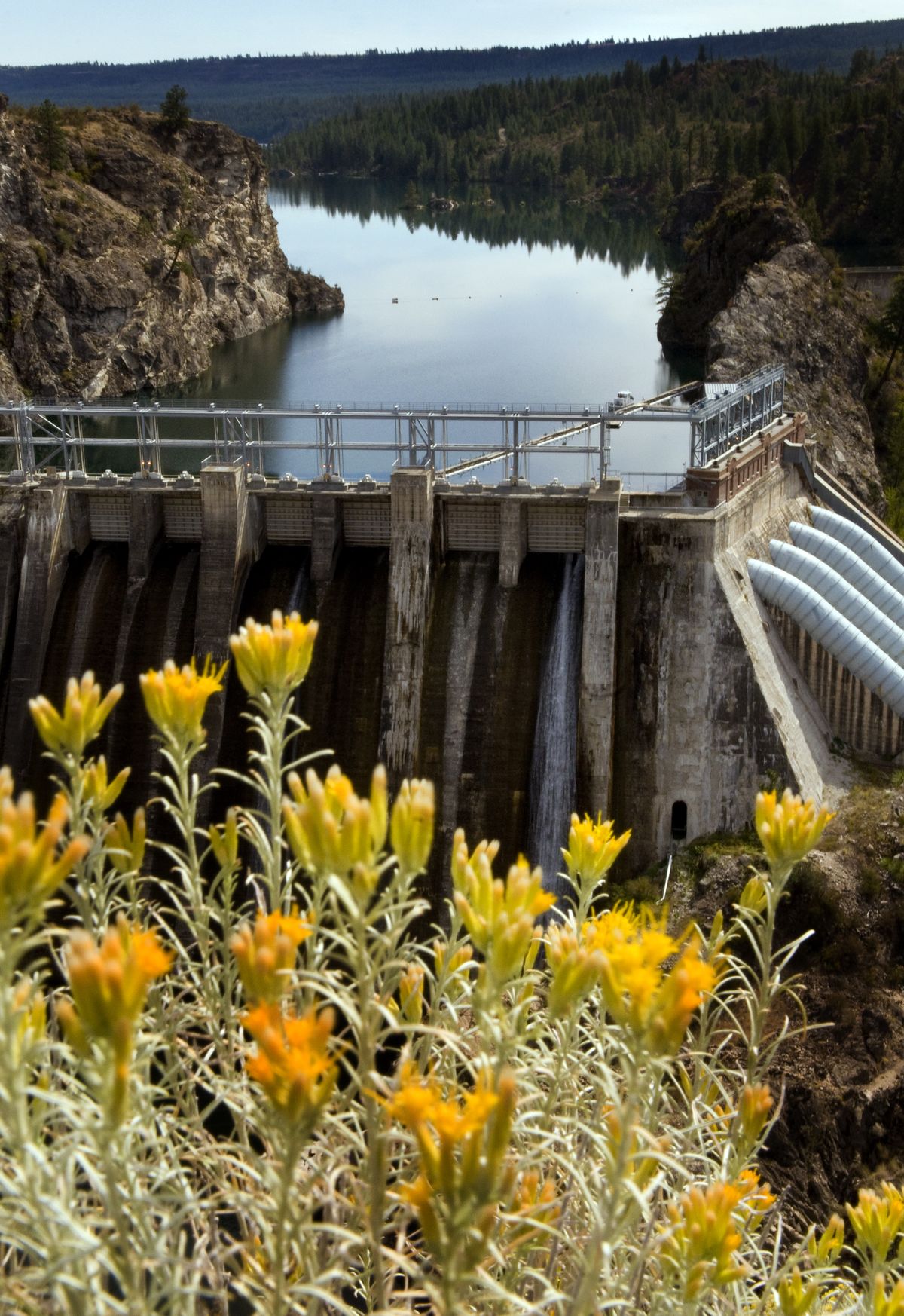State releases clean river plan
Big cuts in phosphorus proposed

The Washington Department of Ecology unveiled a plan Tuesday to curtail algae-producing phosphorus in the Spokane River and improve dissolved oxygen levels for fish.
Under the plan, which needs state and federal approval, the river’s phosphorus levels would drop by about 90 percent within a decade, improving water clarity and snuffing out noxious algae blooms in the 24-mile reservoir behind Long Lake Dam, officials said. But the plan will also usher in some of the country’s strictest discharge standards.
“This plan will make Spokane a nationwide leader in this type of pollution control,” said Jani Gilbert, an Ecology spokeswoman. “It’s innovative, it’s stringent, and it’s something we’ve worked with the community on for years.”
Implementing the plan will cost roughly $500 million. It will require millions of dollars worth of upgrades by local sewage treatment plants and industrial dischargers, better control of storm water and agricultural runoff, and some changes in how Avista Corp. operates its hydropower dams on the Spokane River.
By 2019, sewage treatment plants and other dischargers would have to reduce their phosphorus output to about 40 parts per billion, which some operators question whether they’ll be able to meet. That’s sort of like adding “an eyedropper drop” of phosphorus to an Olympic-size swimming pool, acknowledged David Moore, a water quality specialist with the Ecology Department.
Eric Keck, the Post Falls city manager, said he’s concerned about his city’s ability to meet the new limits. To protect water quality in Washington, Idaho dischargers also must reduce their phosphorus contributions to the Spokane River.
“The city of Post Falls is willing and desirous of cleaning up its effluent, but what’s been proposed is untenable. There’s no technology that will get us there,” Keck said. “We feel this is an arbitrary standard that the science can’t back up.”
Moore said that while current technology doesn’t allow treatment plants to remove phosphorus at those low levels, existing dischargers will have a decade to meet the standards.
The plan also allows Washington dischargers to use “pollution trading credits.” Two tributaries – Latah Creek and the Little Spokane River – dump significant amounts of phosphorus into the Spokane River. If a discharger pays to reduce phosphorus from another source, such as helping a Latah Creek farmer fix an eroding shoreline, the discharger would get pollution credits that offset its own phosphorus contribution to the Spokane River, Moore said.
Bruce Rawls, Spokane County’s utility director, was still reading through the plan Tuesday afternoon, but said his initial reaction was positive. He’s worked on two earlier drafts of the plan over the past nine years. After so much discussion, there were few surprises.
“Hopefully, this one is perfect,” Rawls said.
Spokane County is building a new wastewater treatment plant, and will apply for a permit to discharge into the Spokane River. As a new discharger, the county would have to meet the stricter phosphorus standards immediately. “We’re OK with that,” Rawls said.
A year ago, the Ecology Department was on the verge of issuing the river cleanup plan when the Environmental Protection Agency announced that it had erred in accounting for phosphorus contributors from Idaho dischargers, which EPA initially considered minimal. The plan was rewritten to acknowledge how phosphorus from Idaho affects downstream water quality. The new cleanup plan also requires Avista to devise ways to improve oxygen levels in Long Lake. The reservoir contributes to water quality problems.
Rick Eichstaedt, an attorney who represents the Sierra Club on Spokane River issues, applauded Avista’s participation.
“Avista created the reservoir that’s the problem here,” said Eichstaedt. He also said that the revised plan also does a better job of recognizing upstream sources of phosphorus, which was a concern for the Sierra Club in earlier drafts.
At the city of Spokane, spokeswoman Marlene Feist said city officials were glad that the new plan was finally out, but were still reviewing the document and couldn’t comment.
A law passed by the Washington Legislature this year could grant extensions for meeting the new standards. Inland Empire Paper Co. lobbied the Washington Legislature to allow dischargers up to 10 years worth of extensions. The newsprint company, which discharges into the Spokane River at Millwood, is a subsidiary of the Cowles Co., which also owns The Spokesman-Review.
Karin Baldwin, an acting Spokane River cleanup supervisor, said details of the extensions will be hashed out in 2012, through a rule change in Washington’s water quality standards.
“We’ll still require people to do everything they can to meet requirements in 10 years,” Baldwin said.
Dischargers will get more information on their specific phosphorus limits later this year, when new draft discharge permits are issued. The Ecology Department issues permits for Washington dischargers, and EPA issues permits for Idaho dischargers.
Meanwhile, the Ecology Department is accepting public comments on its river cleanup plan through Oct. 15.